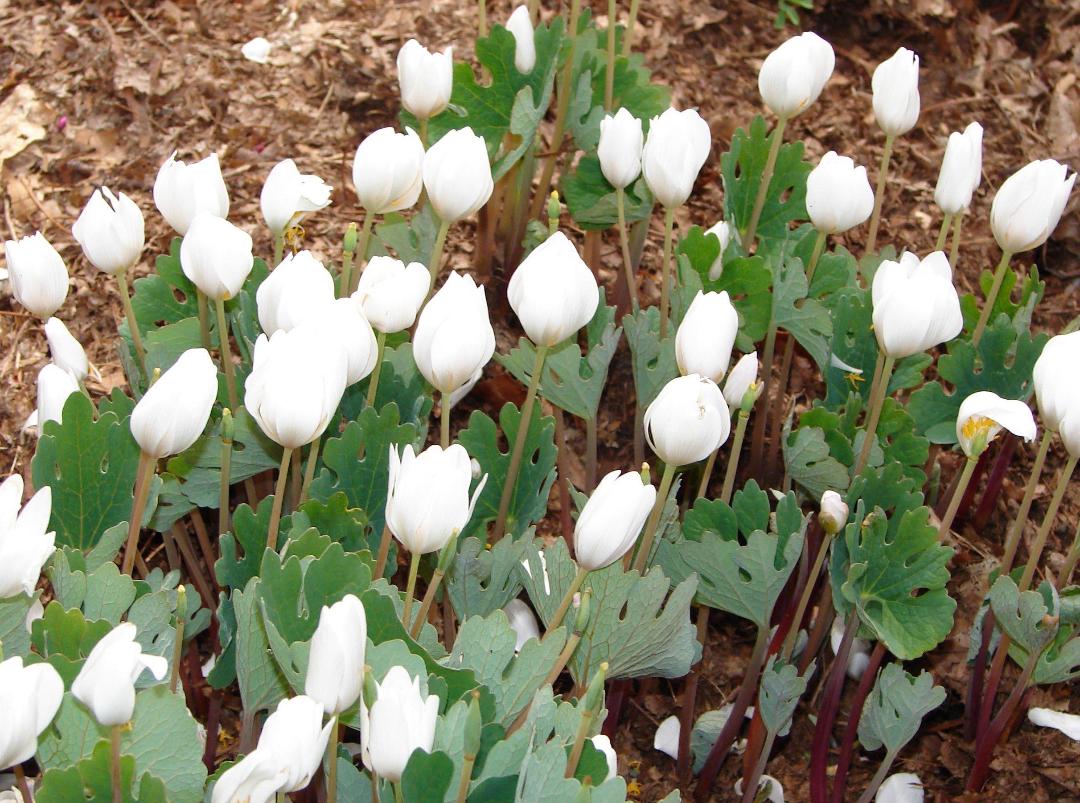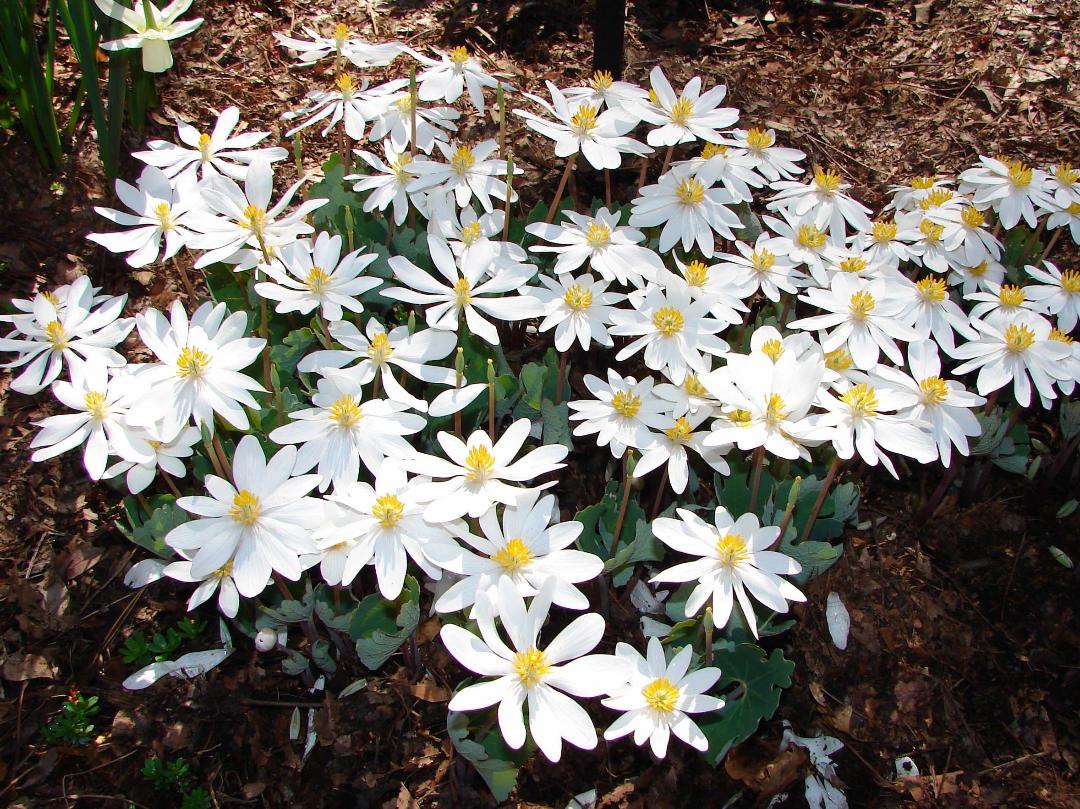Plant of the Month Mar 2019: Bloodroot
Bloodroot, Sanguinaria canadensis, Bloodroot is one of the earliest wildflowers to bloom in our area and is found in moist woodlands and floodplains. The flowers are relatively large and showy for such a diminutive, ground-hugging plant, with 8 – 10, crystalline-white petals that surround a burst of golden stamens. They are exceedingly beautiful but short-lived, often lasting only a few days.
Snow-white buds arise in mid to late March, enfolded by a heavily veined leaf. After the delicate petals have fallen, the leaves continue to expand and can reach ten inches across, creating a stunning groundcover. Bloodroot is a rugged and long-lived perennial that will return year after year to grace your early spring woodland garden with minimal care. They will expand into beautiful low colonies with handsome lobed foliage if given the right conditions.
Bloodroot is easy to propagate by digging and dividing the horizontal rhizome (root) that lies just below the surface. When broken, the roots extrude a “blood” red sap that gives rise to the common name. Although toxic, this sap has been used for a number of medicinal remedies and as face paint by Native Americans.
Newly emerged Bloodroot with buds and distinctive leaves
Bloodroot in bloom
Submitted by Betsy Washington, Northern Neck Chapter, Virginia Native Plant Society.


